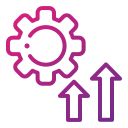Tools and Automations That Save Minutes Daily
Overlay work, personal, and focus calendars. Color deep work boldly, meetings softly, and personal obligations clearly. This triangulation prevents accidental double-booking and makes trade-offs visible before conflicts become last-minute emergencies.
Tools and Automations That Save Minutes Daily
Use a Kanban board with Eisenhower labels and a narrow Today column. Pull only what fits. One engineer halved context switching by limiting Today to three cards and batching tiny tasks together.





